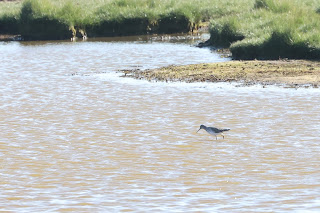Dark-eyed Junco: I finally caught up with on of these charismatic little sparrows, a bird common across much of temperate North America and in summer ranges far into the Arctic. Dark-eyed junco are now pretty much an annual bird to the UK but more often then not they are recorded ion private gardens.
This bird didn't buy the trend turning up in a private garden. I was a little apprehensive the night before we set off, with the idea of limited viewing from a private garden who's owners only wanted us to arrive after 1pm I imaged a sene of carnage as folk screamed over each other and I'm left with only fleeting views form, the back.
The reality on the ground however was very different, yea arrived to a friendly home owner who was very welcoming and a small crowed and I was able to get to the front without any issues.
We waited for around an hour before seeing the bird in flight and eventually it came to the nearby cypress tree and then down to the bare branches of a walnut tree then the ground.
A New World warbler and one of five major subspecies: grey-headed, Oregon, pink-sided, slate-grey and white-winged. The most widespread is the dark-eyed variety.
A smart little bird that performed really well for the crowds, big thanks to the home owner for letting us int his garden to view the bird.

















